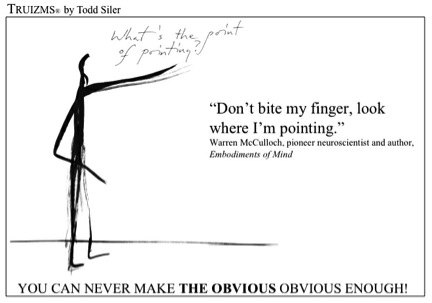Stanley Feld M.D.,FACP,MACE
“Dear Dr. Feld
My wife and I are 43 years old. We have a 7 year old daughter. All three of us are in excellent health. We have minimal medical bills and yearly checkups.
I just left an executive position in a company that had excellent healthcare insurance.
I am in the process of hunting for a new executive position. I am currently uninsured. I have the option to buy COBRA insurance for the next 18 months or until I get a job with good healthcare benefits.
The COBRA premium quoted to me to be $1600 per month or $19,200 per year. My former employer told me he was paying $15,000 for the same insurance.
I cannot afford $19,200 per year. Neither can I afford not to have healthcare insurance coverage for my family in case of catastrophic illness. I searched the Internet for the best option.
There were at least 97 healthcare insurance policies offered for individual coverage. After I got through understanding the fifth policy I was exhausted. None seemed to be a good deal.
I have been a reader of your blog and always say to myself thank God I do not have to deal with the dysfunction you describe. I could not believe I would be in this situation.
You seem to understand the problems in the healthcare system. What do I do next?
Thank you in advance for any help you can offer.
Sincerely
H”
I have received other letters of disbelief from young people. They did not appreciate how unfair, non transparent and truly dysfunctional the healthcare system was until they encountered the problems.
The future belongs to the 20 -50 year old age group not seniors. They are all consumers and potential patients. They are are going to need a viable healthcare system at some point in their life.
This age group must take an interest in developing an understanding of and take responsibility for getting involved in fixing the dysfunctional healthcare system now.
In general 20-50 year olds are not sick. Only 20% of the population is involved in dealing with the healthcare industry at one time. Eighty percent of the population does not interact with the healthcare system. When they do they realize how dysfunctional it is.
100% of the consumers must demand, simultaneously, the healthcare system become transparent and equitable.
The structure of Present Obama’s healthcare reform plan has not yet delivered nor does it have a chance to deliver is promises. In fact, it has made the healthcare system more dysfunctional and unfair.
Change in the system has to be consumer driven in order to force the government to reform the system so it is affordable and accessible to all. This means honestly eliminating waste at all levels.
President Obama’s waivers to favored groups and concession to vested interests political pressures will not improve the system.
I totally understand that when dysfunction affects the other guy, young busy unaffected consumers have no interest in being involved in actively changing the system. However, they are going to be the other guy at some point.
In answer to the reader’s question “What do I do?”
He could sign up for COBRA. The COBRA system is a flawed system. It is a dishonest promise. COBRA was accepted by congress and consumers without understanding its underlying consequences.
“The Consolidated Omnibus Budget Reconciliation Act (COBRA) gives workers and their families who lose their health benefits the right to choose to continue group health benefits provided by their group health plan for limited periods of time under certain circumstances such as voluntary or involuntary job loss, reduction in the hours worked, transition between jobs, death, divorce, and other life events. “
Nothing in the Department of Labor’s document covers how the premiums are determined by the healthcare insurance industry.
A consumer electing to take COBRA is charged the calculated premium for an individual healthcare plan. The premium is very high.
Actuarial calculation is designed to the benefit of the healthcare insurance industry. The calculation is not transparent. I suspect the government does not oversee the calculation.
COBRA is about the only option good for a 50 year old obese male with hypertension and hyperlipidemia who has a wife and a 7 year old child. He would be rejected for all private insurance plans.
The individual state’s “high risk pools’” premiums are even higher than COBRA’s premium. The high risk insurance coverage is less inclusive because it excludes any possible risk from underlying conditions.
I felt compelled to help this reader.
He needed coverage in case of a catastrophic illness in his family until he obtained a new position. At his age and health history he should not have any trouble getting accepted for a high deductible policy.
I told him to check which insurance company his family’s physicians accept. It was UnitedHealth.
The 8th plan down the list of UnitedHealth options for high deductible was a $10,000 called Plan 100. The premium would be $318.82 a month. The deductible was $10,000. The plan provides full first dollar coverage after the $10,000 deductible is met up to 1 million dollars.
UnitedHealth Plan 100 underwritten by Golden Rule also had a $7,500 deductible for $417.
I thought this was the plan for this family. Their routine healthcare costs were less than $1000 year. The premium for the $7,500 deductible is $5004 per year. Total savings vs. COBRA is $19,200-$6004= $13,196.
If there was a catastrophic illness in his family and it cost more than $7,500 his total cost would be $7500 plus $5004 for his premium for a total cost of $12,504. He would still save $6,696 (19,200 for COBRA vs. $12,504= $6,696).
The big disadvantage is his premium costs are not tax deductible as it would be for an employer. At a 30% tax rate this consumer would have to earn $27,429 in order to pay $19,200.
The adjudication of claims is simple. The physicians send the bill to UnitedHealth. UnitedHealth allows physicians their negotiated fee. The consumer is then sent an explanation of benefits for allowable fees.
Since the consumer has not reached the deductible, he is required to pay the physician’s allowable fee. This fee is credited toward his $7,500 deductible.
When the deductible is reached the full allowable amount for services is paid. This is the best deal under the present healthcare insurance options for this family of three.
He bought the high deductible Plus 100 insurance. He also complained about the confusing array of options and prices, the lack of transparency about these options, and difficulty in easily understanding the options.
He said he is a pretty smart fellow. He had difficulty in figuring out what to do and was ready to pay for COBRA coverage.
He asked, “How could people of average intelligence figure it out?
It would be easy if there were a questionnaire that would automatically determine consumers’ healthcare policy needs and direct them toward healthcare insurance policies that would fix their needs.
I told him the game is rigged. The insurance industry does not want you to figure out what policy is best for you. It wants you to buy the most expensive policy that might not address your needs.
The opinions expressed in the blog “Repairing The Healthcare System” is, mine and mine alone
Please send the blog to a friend




EndlessImprovement Blog • December 13, 2012
Hey! I was pleased as soon as I loaded this web page of your blog. What was the biggest reason the moment when you to create your future website?